What is Shio Ramen?
Shio ramen refers to ramen with a broth made from salt base “tare” (sauce) mixed dashi (Japanese soup stock). Along with shoyu ramen, it is one of the oldest types of ramen eaten in Japan. Because the soup is not based on rich condiments like soy sauce or miso, it cannot be disguised and is said to be the most difficult ramen to perfect because of its simplicity.
Also, as it’s not too rich like most ramen, but rather refreshing, some enthusiastic fans say shio ramen is definitely the best out of all!
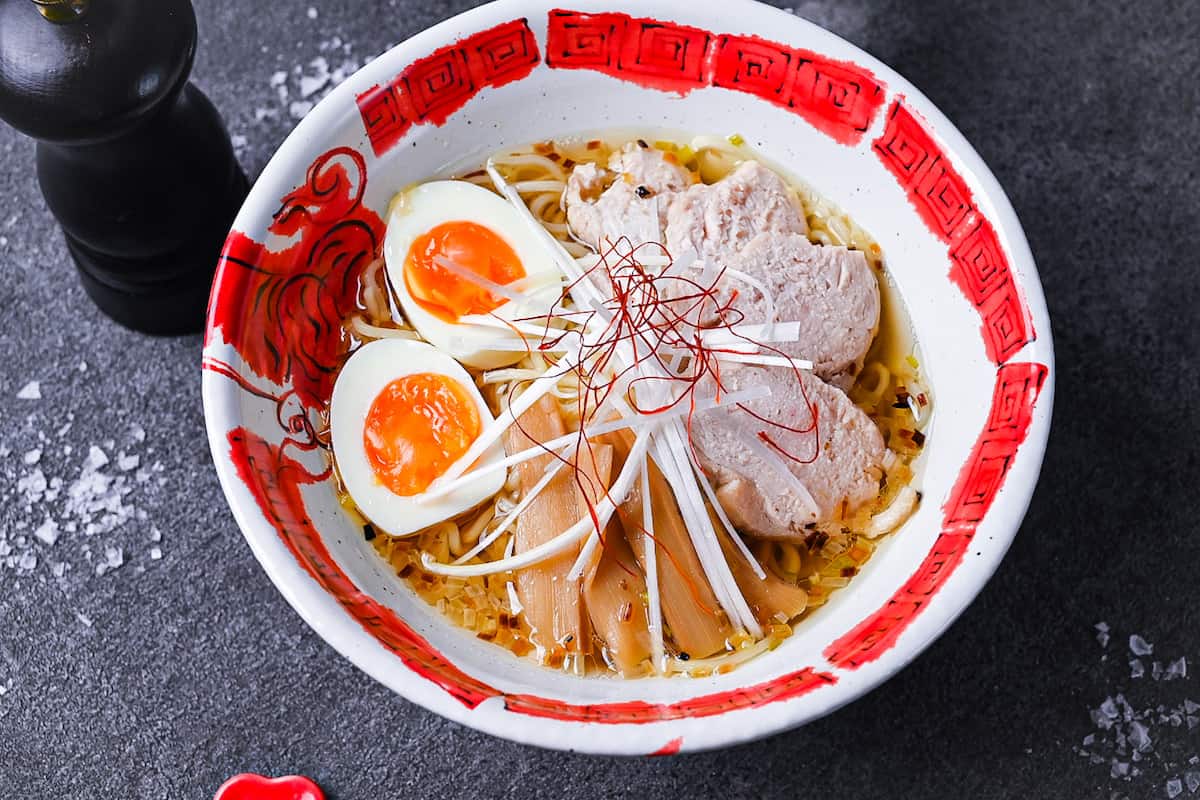

How I Developed This Recipe
Making authentic shio ramen at home is definitely achievable with this recipe. Recognizing that long hours of simmering soup might not be feasible at home, this recipe offers a simplified method, using ground chicken to develop a rich and flavorful broth.
This approach ensures you can enjoy deep, satisfying shio ramen without the required extensive cooking time. I’m proud of this recipe and believe it captures the essence of Shio ramen.
Give it a try for a delightful homemade ramen experience!

Visual Walkthrough & Tips
Here are my step-by-step instructions for how to make Japanese Shio Ramen at home. For ingredient quantities and simplified instructions, scroll down for the Printable Recipe Card below.
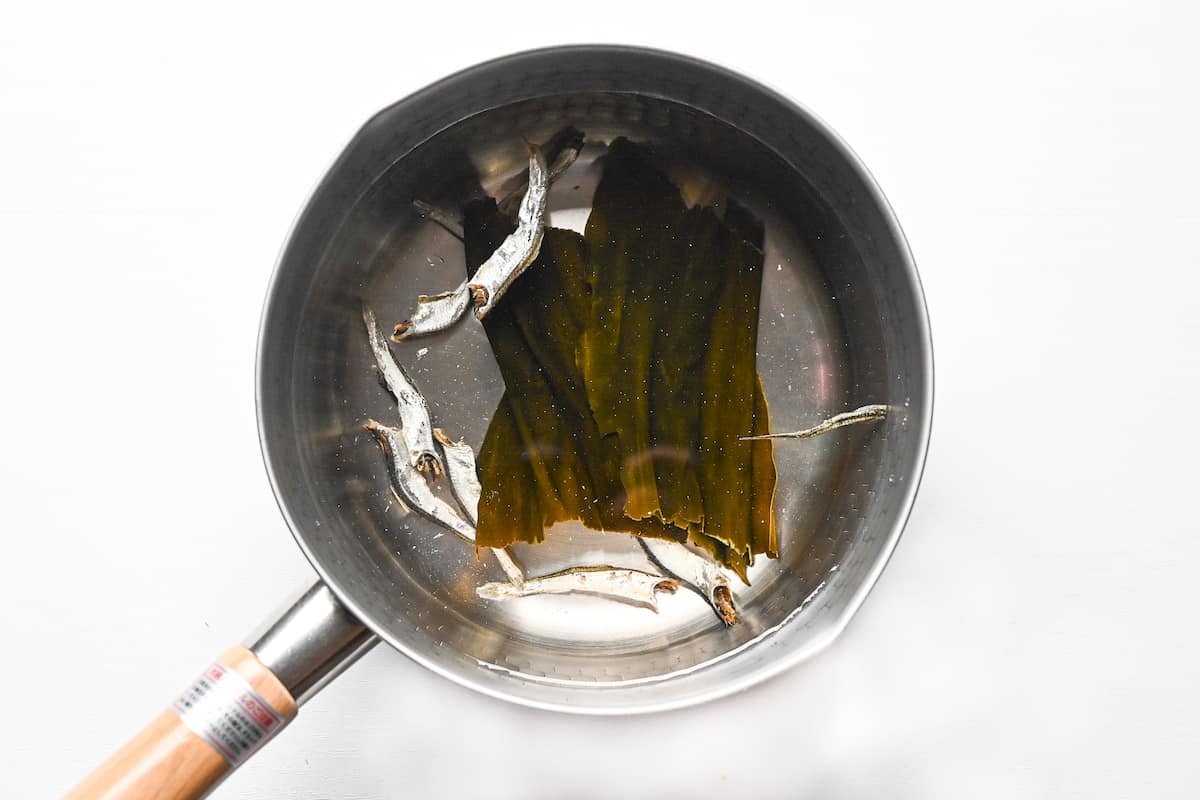
Start by soaking the dried kombu (kelp) and niboshi (sardines) in cold water. This slowly extracts the flavour creating a base for the broth that is packed with umami!

After 30 minutes, add the chicken mince and pork mince to the dashi and swish it around to break it up. The fat from the mince adds a meaty depth of flavor to the broth without having to simmer bones; it’s essentially a shortcut for making ramen broth!

Place the pot on the stove and heat it to medium-high. Bring the broth to a boil and then lower the heat to a simmer. Once it’s simmering, add katsuobushi (bonito flakes), whole ginger, whole garlic cloves, and green onion/leeks. Leave this to simmer for 30 minutes.
Use this simmering time to cook the chicken breast and make the tare for better time efficiency.
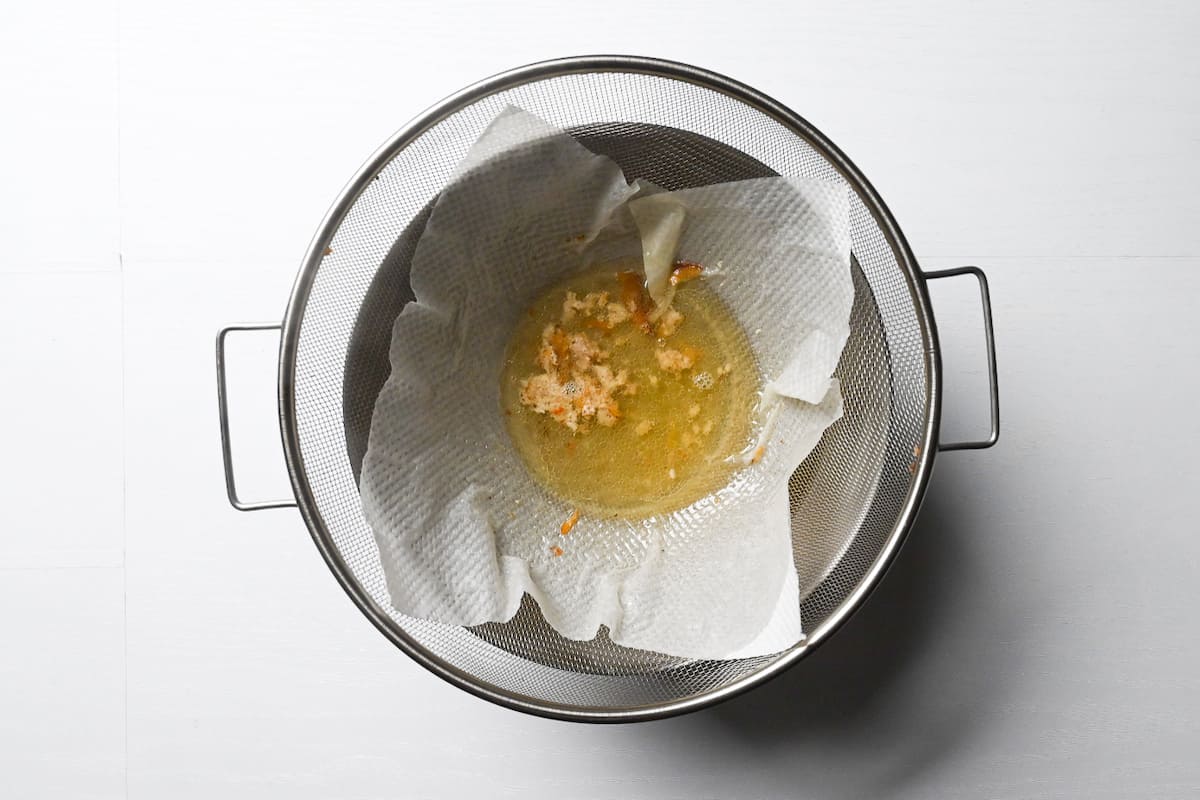
Line a mesh sieve with kitchen paper and place it over a heatproof bowl. Pour the broth through to catch all the small bits. The larger bits tend to stick/stay in the original pot. This step is just to catch the small bits and clear the broth. Set aside for later.
If you’re like me and hate wasting food, you can separate the broth ingredients and fry the leftover mince to make soboro (Japanese-style fried mince) for soboro don or soboro rice balls. I just eat it on its own as a side dish, but of course, this is a bit unusual and definitely optional.
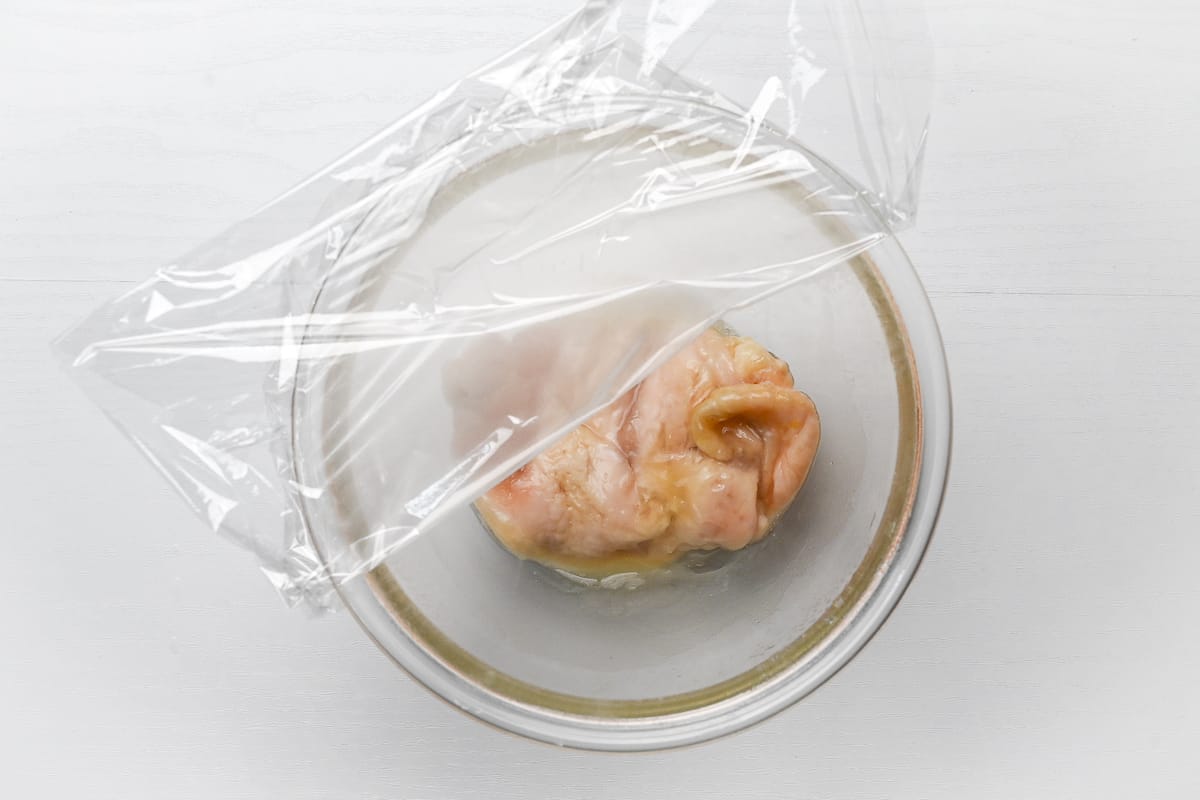
My favorite way to cook chicken for this dish is using my “salad chicken” recipe; it’s essentially a simply steamed chicken breast cooked in the microwave. If you want more details, check out my Chicken Salad recipe. Here is a round-up of the steps:
- Dry the surface of the chicken with kitchen paper.
- Pierce both sides thoroughly with a fork.
- Sprinkle with salt on both sides.
- Coat with a thin layer of cornstarch.
- Take a microwavable bowl and add chicken bouillon powder, sake, mirin, salt, and sugar. Mix it and then place the chicken in the bowl. Turn it a few times to coat it in the sauce.
- Cover the bowl with plastic wrap and microwave for 2 minutes at 600W.
- Carefully peel back the plastic wrap (be careful of the steam!), turn the chicken over, cover again, and microwave once more for 2 minutes at 600W.
- Once the microwaving time is up, set a timer for 10 minutes and leave the chicken to rest in the steam. (Just leave it in the microwave and don’t be tempted to take it out early!)
- When 10 minutes are up, remove the chicken from the bowl and let it cool slightly before slicing. Save the leftover juices in the bowl to add to the ramen broth later.
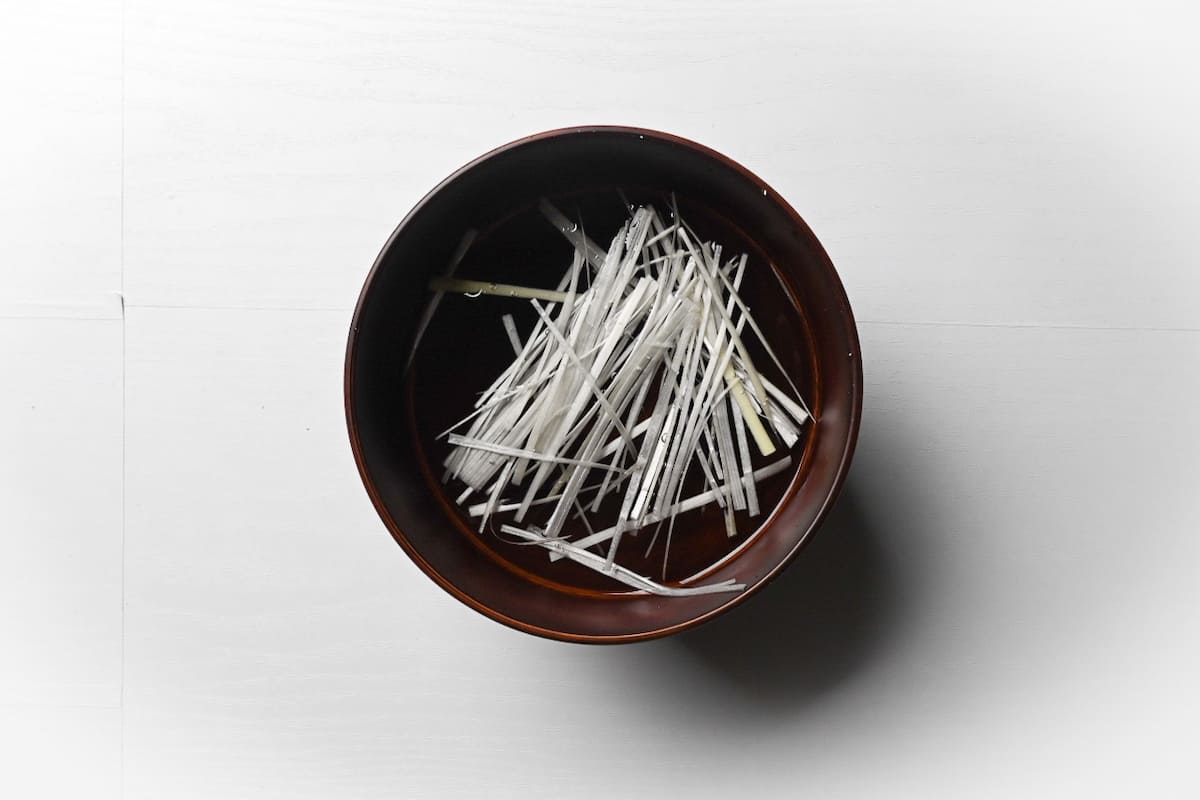
This is an optional topping, but I like to serve my shio ramen with “shiraganegi”, thinly cut strings of the white part of a green onion/leeks. To make these, cut the spring onion into thin “strings” and soak them in cold water for about 10 minutes. This softens the taste and removes any unwanted bitterness.
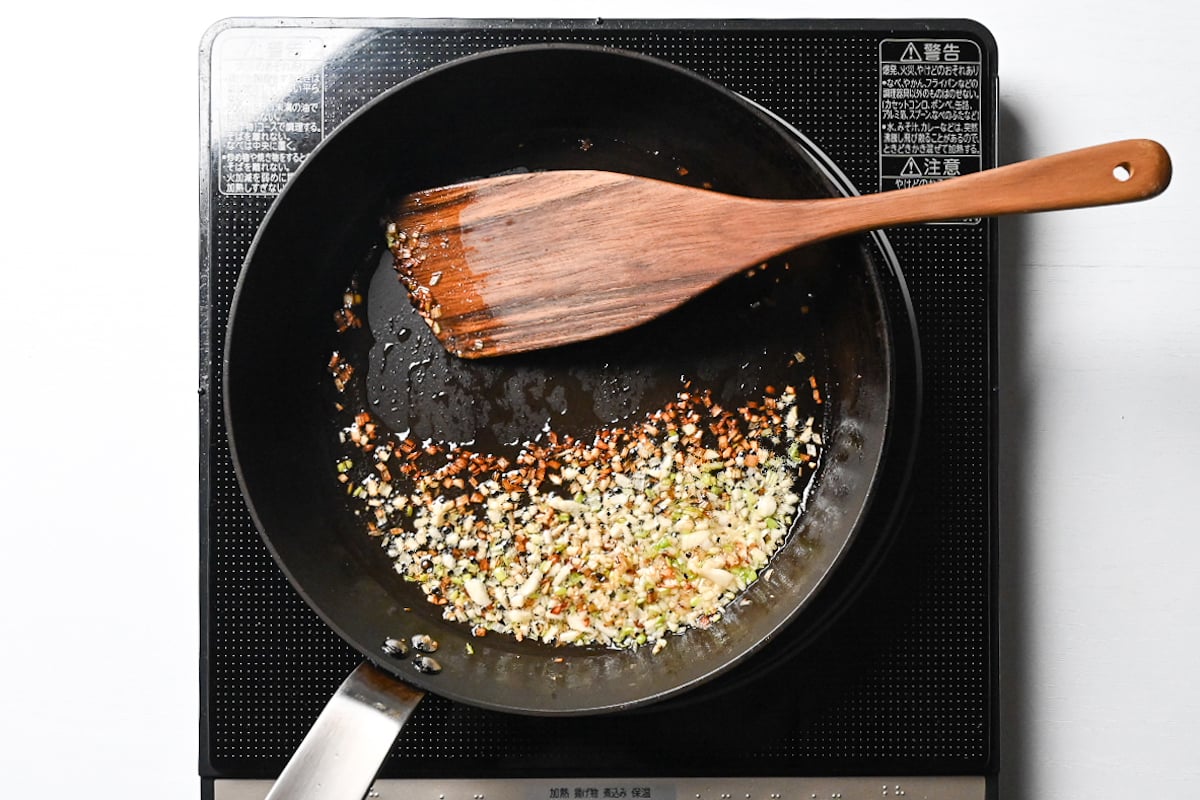
Add lard, finely chopped garlic, and finely chopped spring onion (white part) to a saucepan. Heat on low and fry until the onion is slightly golden and the garlic is aromatic.
Be sure to use low heat for the flavored oil. It takes a bit longer, but the slow heating gently brings out the flavors and prevents burning. If the ingredients burn, the oil will become bitter, so remove it from the heat as soon as it starts to turn golden.

Add the sake, mirin, and salt to a small saucepan and heat on medium-low. Mix over the heat until the salt is dissolved. Turn off the heat, add the soy sauce, and divide it into bowls.

Add the flavored oil and the juices leftover from the steamed chicken to the tare.
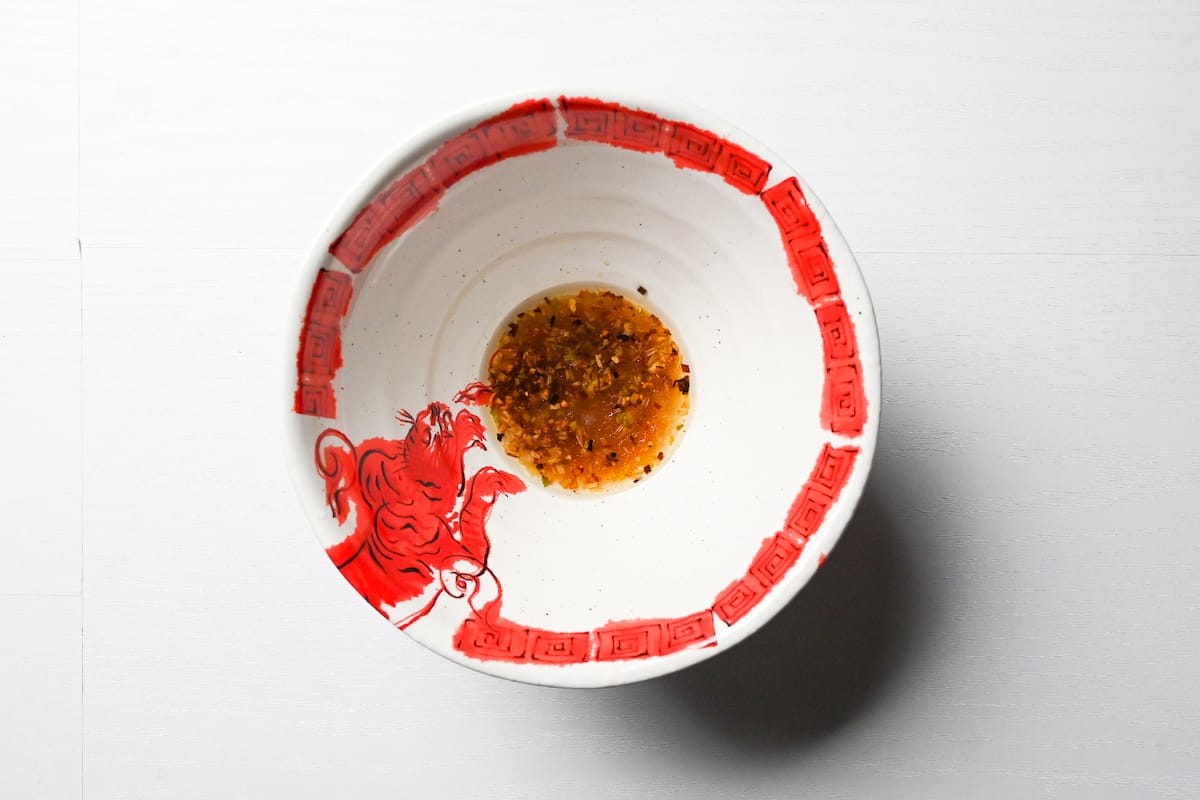
Boil the noodles just before serving (it should only take a few minutes) and reheat the broth if necessary. Divide the noodles into the bowls and add 300ml of broth per serving.
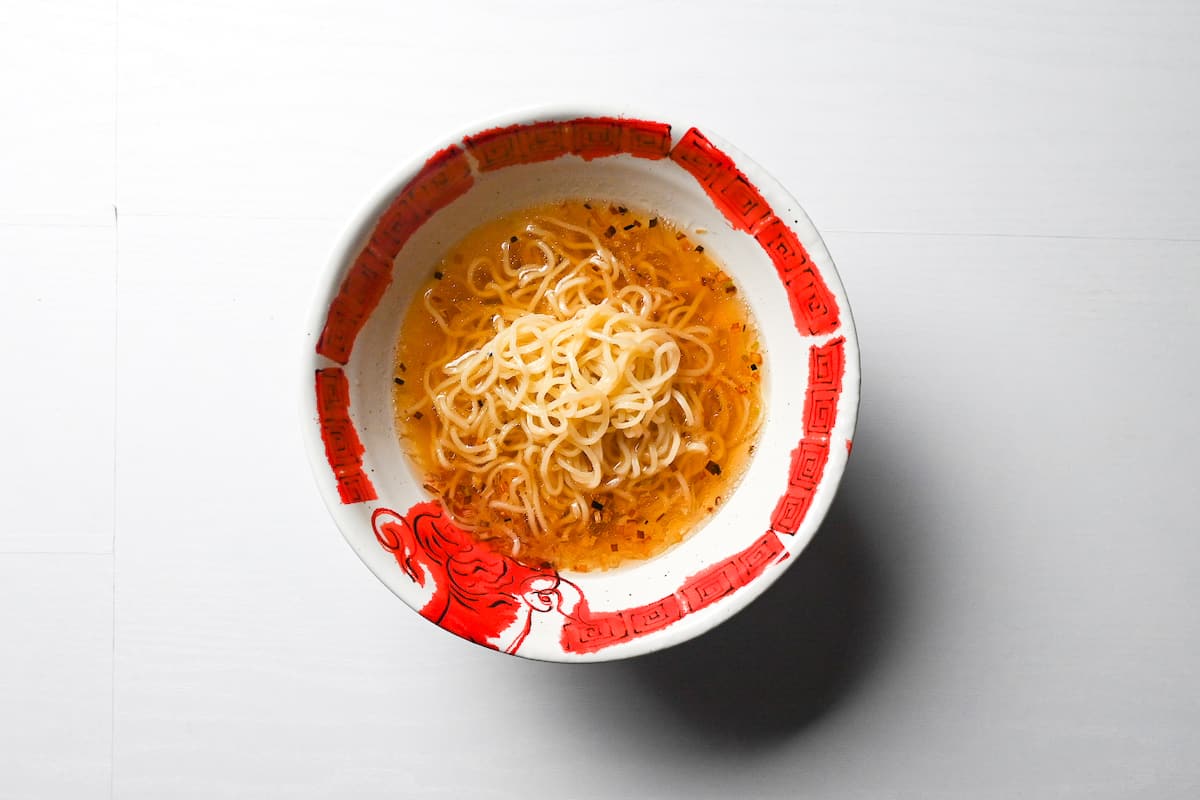
Finally, add your toppings. I used soft-boiled eggs, menma (fermented bamboo shoots), shiraganegi, and chili threads!
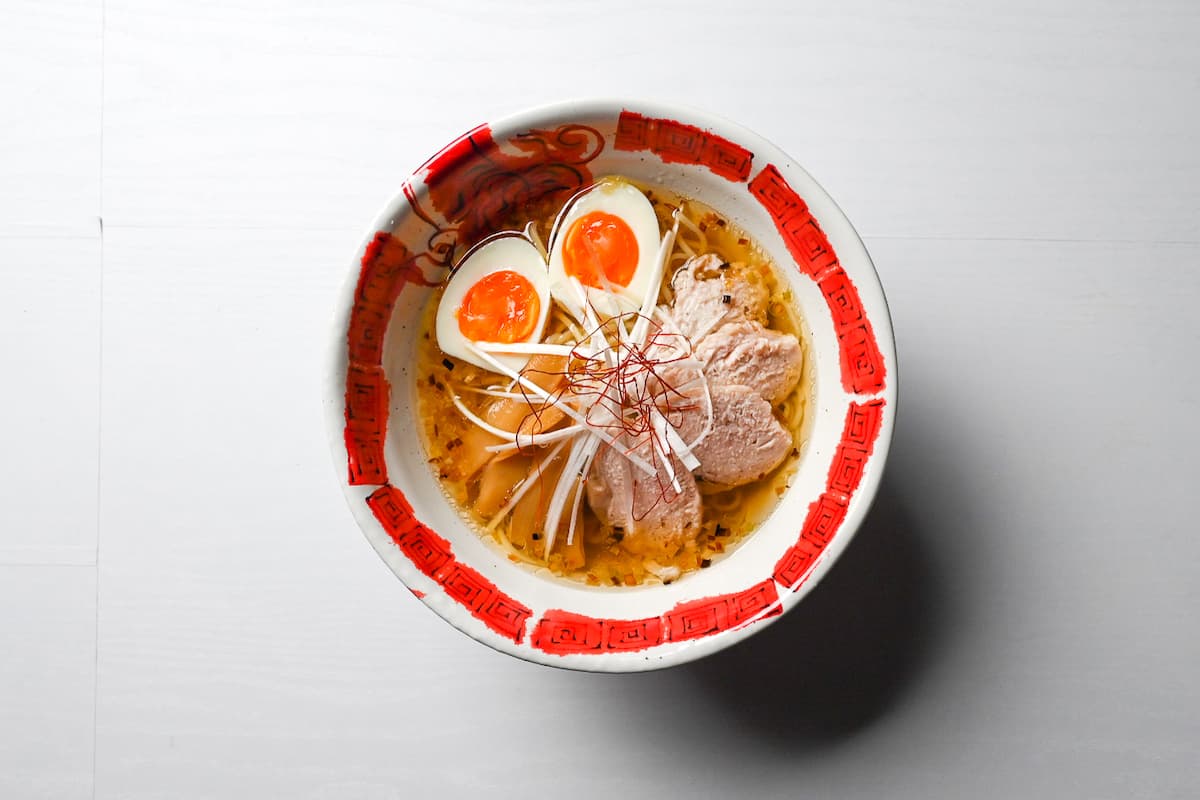
Enjoy!
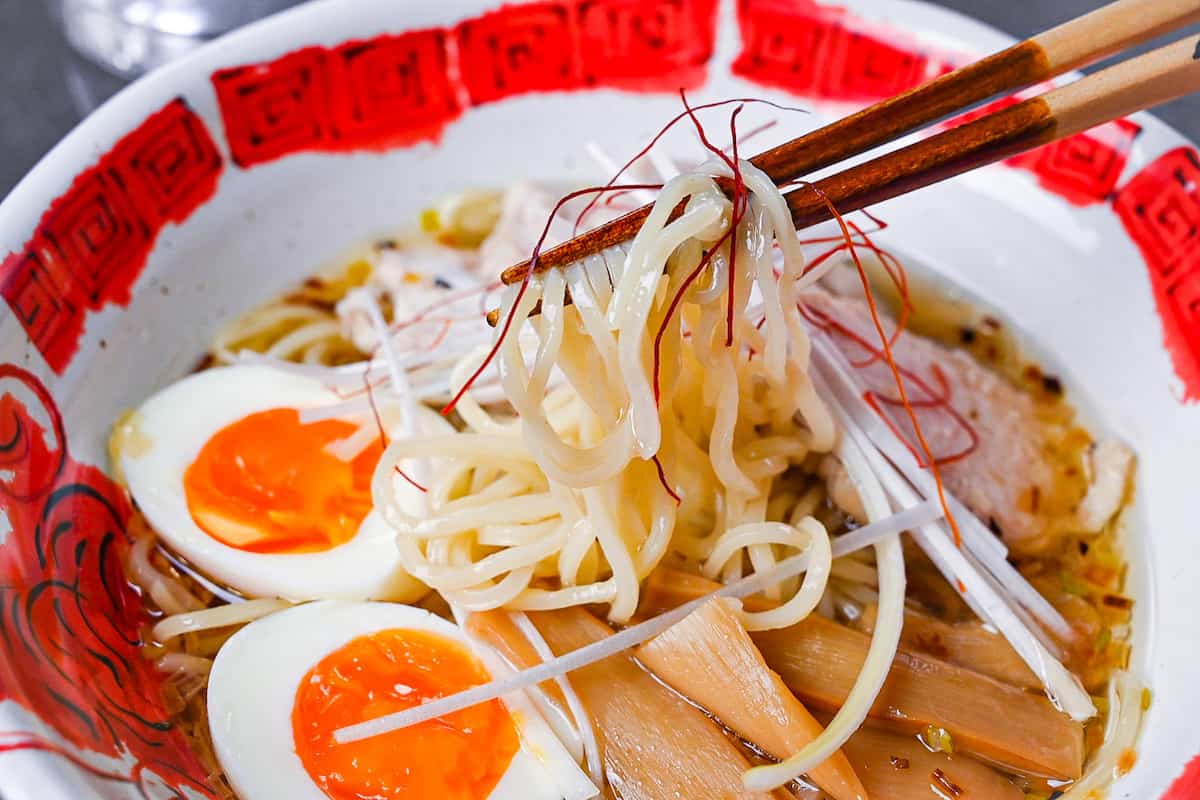
FAQ
Shio ramen is said to have its roots in a noodle dish created in 1884 at Yowaken in Hakodate, Hokkaido, which is believed to be the origin of today’s shio ramen and regional Hakodate ramen.
Until recently, it was believed that the oldest ramen in Japan was shoyu ramen, which originated in Asakusa, Tokyo, in 1910, but this theory was overturned when documents were found showing that the original salt ramen had existed in Hakodate 26 years earlier.
As a result, the theory that shio ramen is the oldest ramen in Japan is now the most promising.
In short, shio (salt in Japanese) ramen is a ramen dish with salt base broth, and shoyu (soy sauce in Japanese) is made with a soy sauce base broth. Because of this nature, shio ramen is paler in color and clearer than shoyu ramen.
The difference between shio ramen and tonkotsu ramen is even simpler. Tonkotsu (pork bone in Japanese) simply refers to ramen that uses pork bones to make the broth. If you have ever been to ramen restaurants in Japan, you might have come across “shio tonkotsu ramen”. That means the broth is salt base tare with pork bone broth.
So, the way to distinguish these two is the existence of pork bone in the making process. As for the looks and tastes, tonkotsu ramen’s broth is creamy and a lot thicker because of the slow cooking process of the pork bones.

I hope you enjoy this Shio Ramen recipe! If you try it out, I’d really appreciate it if you could spare a moment to let me know what you thought by giving a review and star rating in the comments below. It’s also helpful to share any adjustments you made to the recipe with our other readers. Thank you!
More Japanese Ramen Recipes
- Pork Miso Ramen in 15 Minutes (Sapporo Style)
- Shoyu Ramen (Soy Sauce Flavored Chuka Soba)
- Tantanmen (Tan Tan Ramen) in 15 Minutes
- Abura Soba (Soupless Ramen)
Want more inspiration? Explore my Ramen Recipe Roundup for a carefully selected collection of tasty recipe ideas to spark your next meal!

Chicken Shio Ramen (Salt Base Broth)
Equipment
- Red dragon ramen bowl
- Noodle strainer
Ingredients
Broth
- 1000 ml water
- 10 g dried kelp (kombu) kombu
- 10 g dried sardines (niboshi) niboshi
- 100 g ground chicken
- 100 g ground pork
- 15 g bonito flakes (katsuobushi) katsuobushi
- 20 g ginger root whole
- 2 cloves garlic whole
- 50 g Japanese leek (naganegi) green part cut in half/quarters
Steamed chicken
- 250 g chicken breast
- 2 pinches salt
- 1 tsp cornstarch
- ½ tbsp sake
- 1 tsp mirin
- 1 tsp Chinese-style chicken bouillon powder
- ½ tsp salt
- ¼ tsp sugar
Flavoured oil
- 2 tbsp lard or sesame oil
- 2 tbsp Japanese leek (naganegi) white part, chopped
- 2 cloves garlic finely diced
Tare
- 3 tbsp sake
- 1 tsp mirin
- 1 tbsp salt
- 1 tsp Japanese soy sauce (koikuchi shoyu)
Noodles and Toppings
- 2 portions ramen noodles
- 2 tbsp Japanese leek (naganegi) finely sliced
- 2 ramen egg
- 2 tbsp seasoned bamboo shoots (menma) menma
- 2 tbsp chili threads
Instructions
Broth
- Pour 1000 ml water into pot and add 10 g dried kelp (kombu) and 10 g dried sardines (niboshi). Leave to soak for 30 minutes.

- After 30 mins, add 100 g ground chicken and 100 g ground pork to the water and use your hands to swish it around and break it apart. Place the pot on the stove, turn on the heat to medium high and bring to boil.

- Once it's boiling, turn the heat down to a simmer and add 15 g bonito flakes (katsuobushi), 20 g ginger root, 2 cloves garlic and 50 g Japanese leek (naganegi). Leave to simmer for 30 minutes. (For efficiency, I recommend preparing the chicken, oil and tare while it's simmering.)

- Line a mesh sieve with kitchen paper and place it over a heatproof bowl. Pour the broth through the sieve to catch all the small bits and make a clear broth. Set aside for later. (See note on how to use leftover mince.)

Chicken
- Dry 250 g chicken breast with kitchen paper.

- Pierce both sides thoroughly with a fork and sprinkle with 2 pinches salt.

- Coat with a thin layer of 1 tsp cornstarch.

- In a microwavable bowl, mix ½ tbsp sake, 1 tsp mirin, 1 tsp Chinese-style chicken bouillon powder, ½ tsp salt and ¼ tsp sugar.

- Place the chicken in the bowl and cover with plastic wrap. Microwave for 2 mins 600W.

- Remove the plastic wrap (be careful of the steam), turn the chicken over, cover again and microwave once more for 2 minutes at 600W. After the microwave beeps, set a timer for 10 minutes and leave the chicken to rest in the steam.

- Once 10 minutes are up, take the chicken out and cut when it’s cool enough to touch. Save the chicken juices in the bowl for the ramen broth later.

Flavoured oil
- Take a small pan and add 2 tbsp lard, 2 tbsp Japanese leek (naganegi) and 2 cloves garlic . Heat on medium low and fry until the spring onion is browned and the garlic is fragrant.

- Remove from the heat and set aside for later.

Tare
- In a small sauce pan, add 3 tbsp sake, 1 tsp mirin and 1 tbsp salt.

- Place the pan on the stove and heat on medium low. Heat and stir until the salt is dissolved completely. Then turn off the heat, add 1 tsp Japanese soy sauce (koikuchi shoyu) and mix.

Assemble
- Divide an equal amount of tare, flavoured oil and juice from the chicken into each bowl and mix.

- Boil 2 portions ramen noodles just before serving (follow the instructions on the packaging) and reheat the broth if necessary. Divide the broth and the noodles to each bowl.

- Place your chicken and toppings of choice over the noodles.

- Enjoy!




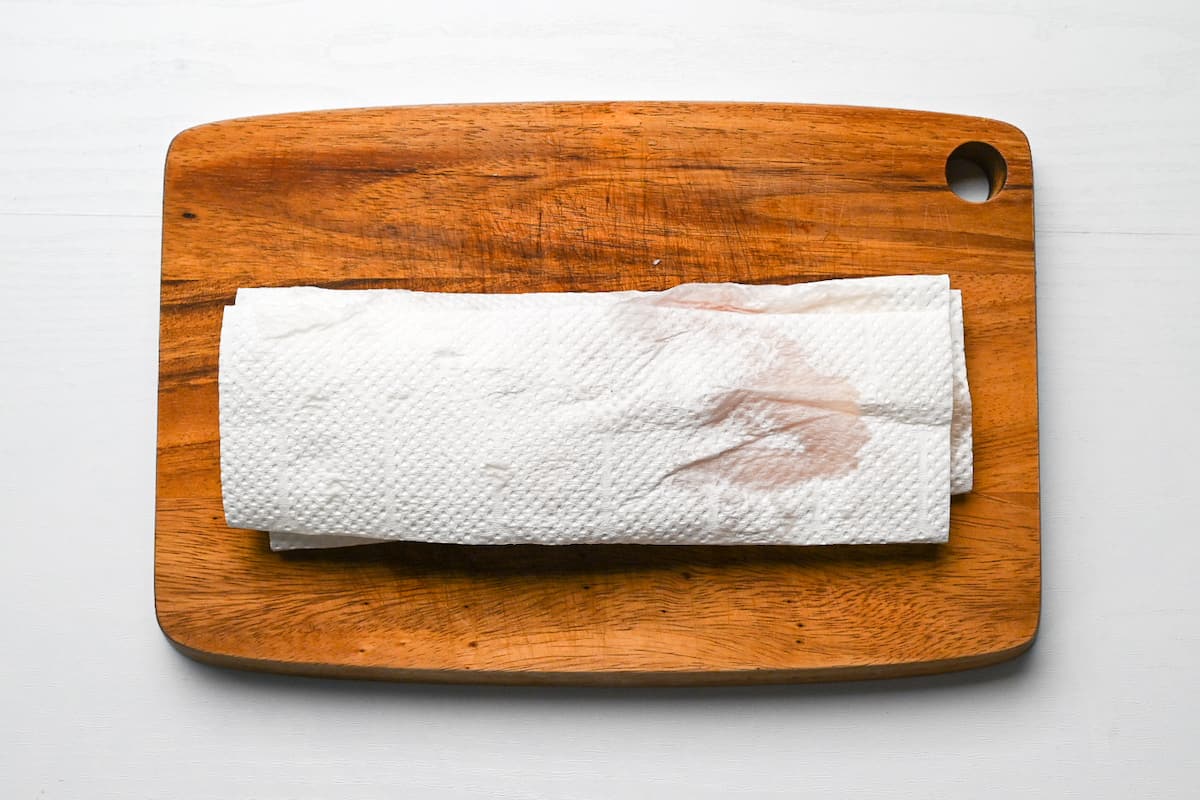
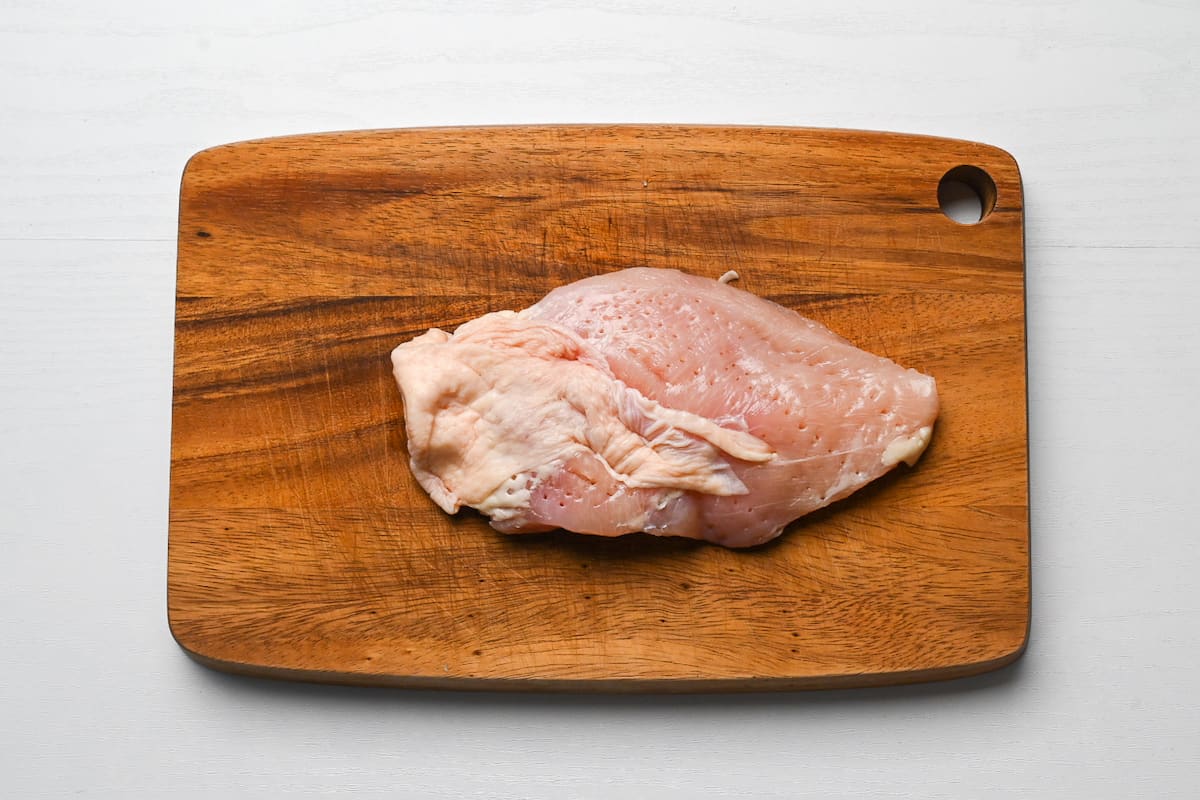
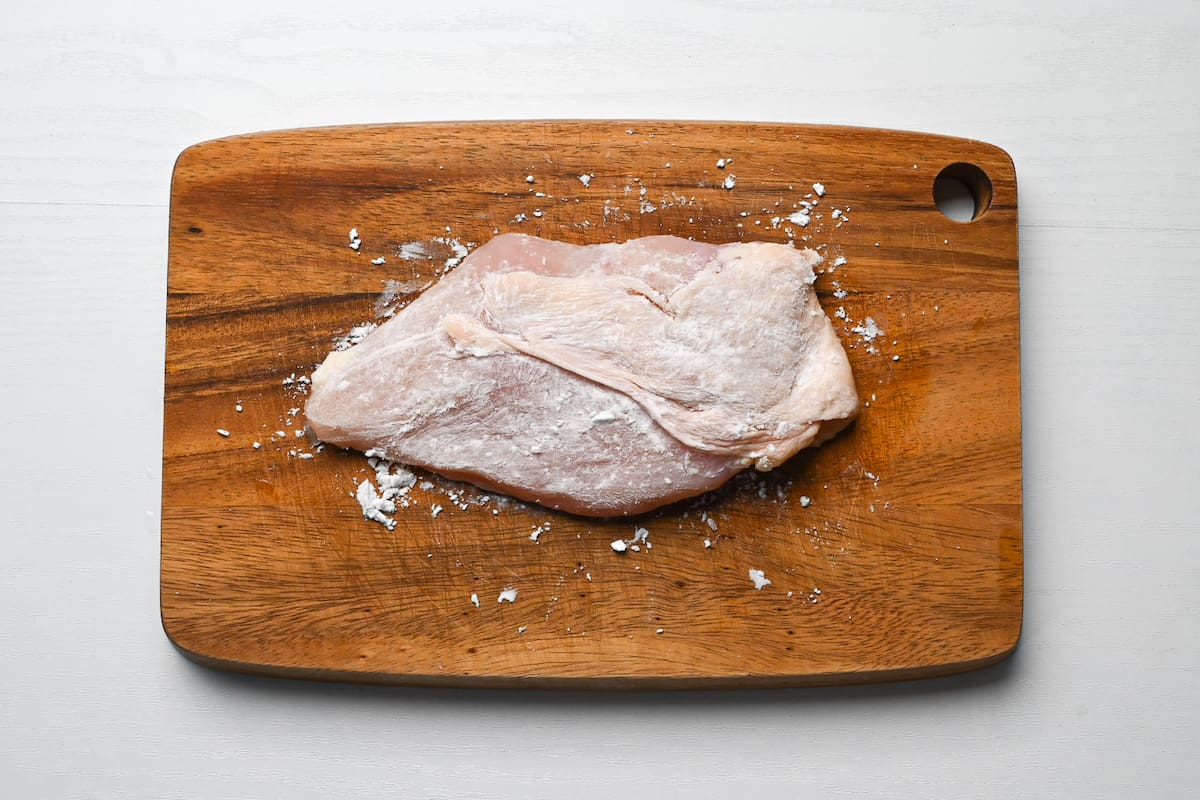
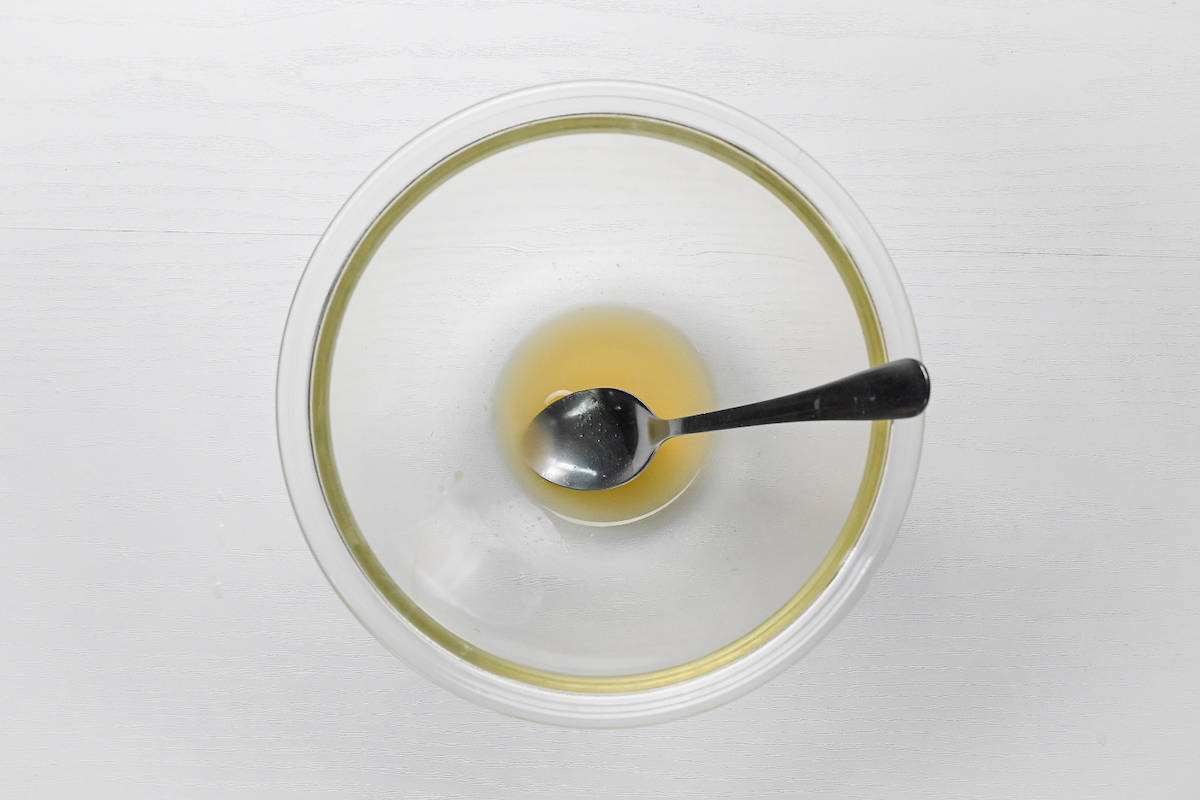
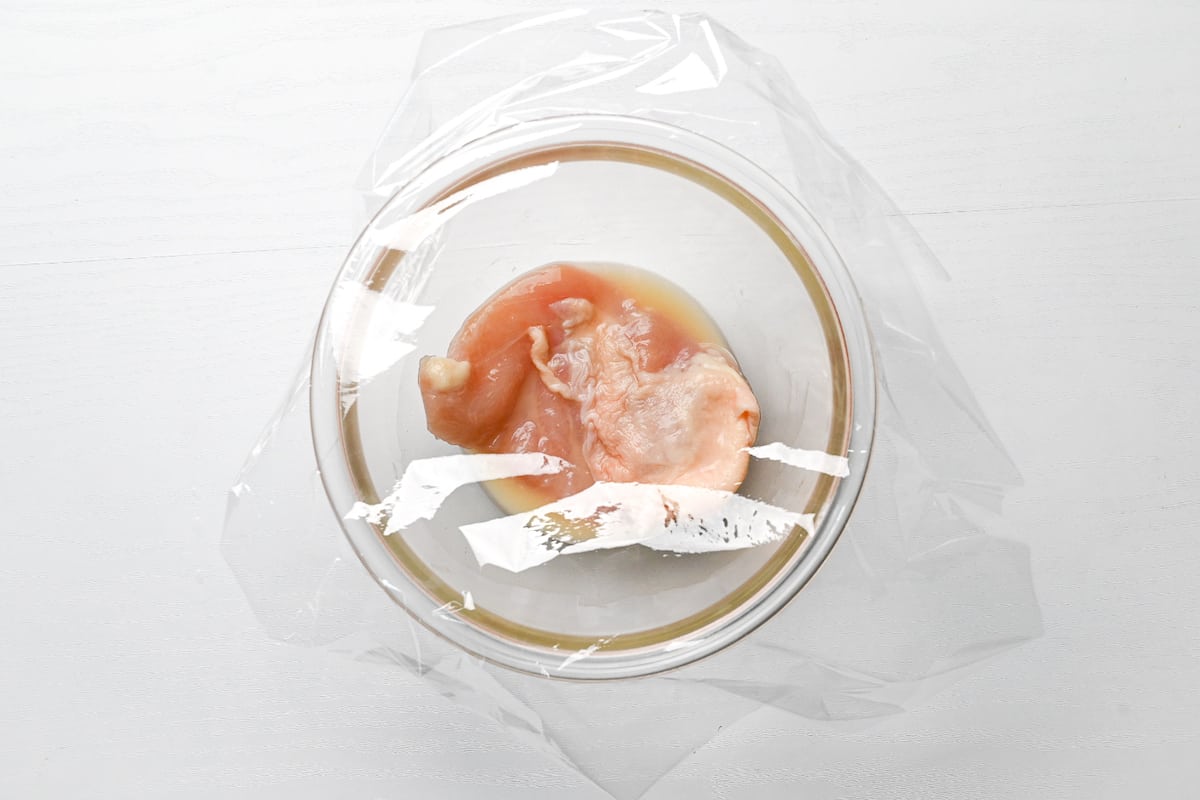
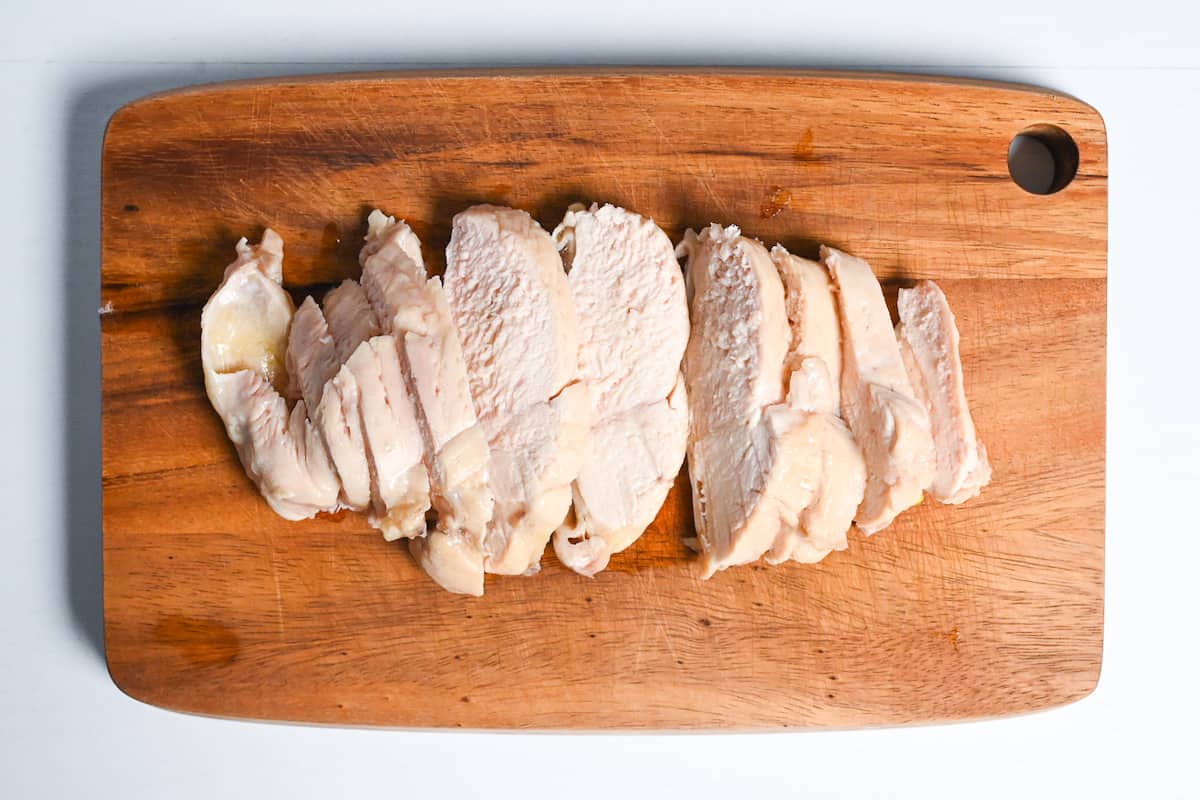


Today I wasn’t making the whole shio ramen w egg & chicken but only tried out the salad chicken recipe. I needed it for something else and for me this is the crucial element in this dish. Since I’m out of the 7/11 paradise with ready made salad chickens, I have been trying to recreate the same juiciness quality. I have to say – this recipe is a game changer and keeper. Fast, easy, dead reliable. Perfect outcome. Thank you Yuto-san.
Hi Isa,
Thank you so much once again for your wonderful feedback and photos! I’m so happy that this recipe helped satisfy your craving for salad chicken! 🙂 It’s great to hear that you found it reliable and easy to make!
Yuto